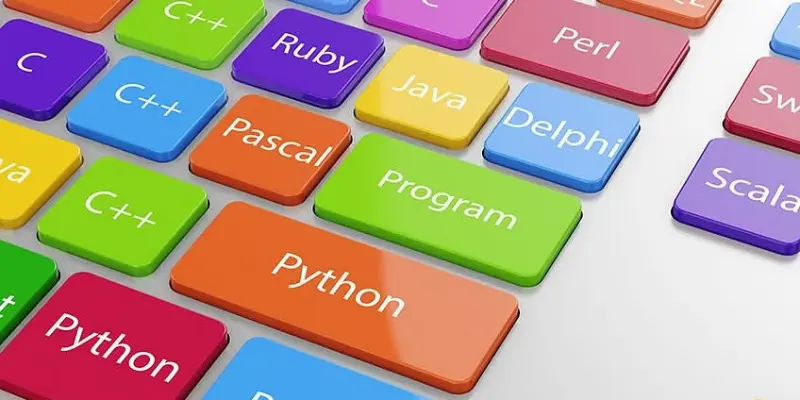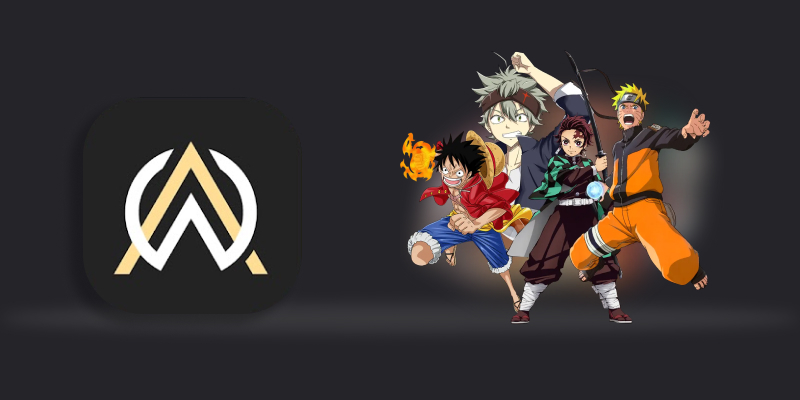Whether you are a beginner or a seasoned programmer, it is overwhelming to be updated with ongoing and fresh trends in popular programming languages. Indeed, the United States holds a significant portion of the development market. It accounted for 31.83% of the total revenue. Zippia reports that the average salary in this field is nearly $100,076. Therefore, it is advisable for business owners or developers to consider the option of collaborating with American customers.
Language builds a bridge of communication between individuals. One person shares ideas and viewpoints, while the other individual hears and understands what is being said. Likewise, computers use language to facilitate communication between the developer’s instructions and the machine’s responses. For the computer’s software to perform a specific task, it must be provided with the necessary instructions in the form of a programming language. A unique language is designed for a system and not every software supports all languages. Thus, it is essential to know about the most sought-after and well-paid computer languages in order to establish a profitable and thriving career.
Read About: Top Tax Calculator Apps
In Vogue Programming Languages List in the US
1. Clojure
.webp)
Clojure is counted in the list of top programming languages with an extensive scope. It is the most challenging computer language in the US due to its compatibility with Java Script platforms, Java Virtual Machine, and Common Language Runtime. Since it can access all frameworks and libraries of Java, both Java and Clojure languages can work on issues altogether which are challenging to address separately. It is a variation of ‘Lisp,’ indicating it has the same information and principles as Lisp. Many businesses opt for Clojure due to its capability to handle large volumes of data. Developers utilise it for AI and Data Analysis. Recognized for its clarity and simplicity, it focuses on code being treated like data and welcomes unchanging data structures. Clojure’s Lisp roots enable compact syntax and robust macros, encouraging the generation of scalable systems. Hence, it is one of the most popular programming languages and offers a highly paying profession ahead.
Prominent features:
-
Clojure stresses the importance of immutability, showing that once a data structure is established, it cannot be altered.
-
It provides support for concurrent programming, possessing features such as software transactional memory (STM), which makes it convenient to frame concurrent programs.
-
Its dynamic typing allows variables to be assigned without being restricted to specific data types.
-
It also enables metaprogramming that allows coders to define fresh constructs of language and extend the whole language.
2. Lisp
.webp)
Lisp is the shortened form of ‘List Processing.’ It is a powerful language that prioritises recursion and symbolic calculation. Having originated in the 1950s, its distinctive structure, originating from nested lists, blurs the boundary between data and code. It helps make swift modifications to data charts. It uses different dialects, and the codes can be interpreted without effort. Most developers need a compiler to translate the source code into artificial or machine code and even into a separate language. Despite being an outdated language, it is still one of the popular programming languages used due to its simple learning curve and strong performance with concise code. Nevertheless, Lisp can work without a compiler because it has a vast dialect that is built-in by default and deciphers the code smoothly.
Prominent features:
-
Variables can hold values of any type because they are dynamically typed.
-
Lisp implementation includes a garbage-gathering mechanism to regain memory that was unused for a long time.
-
Lisp offers a range of pre-built data structures like arrays, lists, and hash tables.
-
Lips consist of closures, which are functions that inherit their surrounding lexical environment. It enables a concise representation of the function and linked data.
3. Erlang
.webp)
It is one of the most reliant and best programming languages used in the telecom sector. It implements code and its functions on availability without any extra effort or overworking. It has a support system that can tolerate faults and troubleshoot problems, distribute data, segregate data as per subcategories, and perform rapid actions for effective outcomes. Many messaging companies, such as WeChat and WhatsApp, use this language. Unlike other computer languages, Erlang doesn’t claim to be bug-free or crash-proof. Instead, it prioritises addressing them promptly when they occur. The lightweight operations help coders to start the system from scratch and embrace self-healing traits. The default features, including distributed processing and hot code swapping make the programming language an authentic choice for creating resilient applications. The expressive syntax enables developers to create strong systems that can handle challenging workloads properly.
Prominent features:
-
Erlang was built with concurrency as a core feature. It uses lightweight processes rather than conventional OS threads for execution.
-
It is highly effective in soft real-time systems, where prompt response is crucial despite occasional delays.
-
Its emphasis on functional programming promotes the use of immutable data and pattern matching, which simplifies the code and removes errors.
-
Erlang is lightweight in terms of CPU overhead and memory, allowing the creation of numerous processes on one machine only.
4. Ruby
.webp)
Ruby is an open-source scripting programming language. Ruby is well-liked due to its compatibility with various platforms such as UNIX, Windows, Mac OS, and more. Its distinguishing feature is its adherence to the Principle of Least Astonishment. This function enables Ruby to perform functions smoothly, reducing the dilemma for both users and developers. The syntax is too simple to use. Ruby’s strong metaprogramming features and complex structure allow quick development in a range of areas, such as automation, data processing, and web development. It has a rich bundle of libraries which makes it an excellent choice for web development. By supporting various programming models, it enhances developers’ efficiency. Today, it is considered the best programming language for its balance of expressiveness, making it trustworthy among experienced and beginners to craft maintainable code.
Prominent features:
-
Ruby includes primitive data types such as booleans and integers.
-
Ruby allows for the use of code blocks that can be treated as objects and passed between different parts of the code. Procs are a method of storing blocks of code in objects for future use.
-
Ruby is a package manager for programs and libraries, which eases the process of sharing and reusing code.
-
Ruby manages the memory automatically using a garbage collector that can deallocate unreferenced objects’ memories.
5. Elixir
.webp)
To create a scalable distributed system, there must be a programming language that has access to unique concurrent tools where multiple calculations happen at once. Being its standout feature, concurrency assists in message passing making it a suitable option for regulating distributed system activities. Elixir is, by far, a powerful and authentic computer language. It is pretty similar to Erlang as they share identical attributes for designing software. Building upon the Erlang VM (BEAM), it adopts Erlang’s proven concurrency mechanism, fault tolerance, and distributed computing features. Its advanced metaprogramming functionalities allow for adaptable and scalable codebases. All thanks to Phoenix, as it has become one of the top programming languages in fields like IoT. Elixir is gaining traction day by day as its community grows to produce robust and dependable solutions.
Prominent features:
-
Elixir takes the “Let it crash” approach, ensuring failures are contained and managed effectively to maintain system reliability.
-
Tooling support and interactive shell help in quick testing and debugging that fosters a seamless development workflow.
-
The syntax is clear and readable, easy to understand, and contributes to a manageable codebase.
-
Elixir has a lively community and ecosystem, including libraries such as Nerves for IoT, Phoenix for web development, etc.
6. Rust
.webp)
Rust is a secure type of language known for its rapid speed, in contrast to various other top-paying programming languages that are overly complicated and lack user-friendliness. Many computer languages need help managing a high volume of work in the workplace, and this can hamper productivity. Rust tries to maintain an equilibrium between a swift user experience and highly innovative capability. Rust’s syntax is influenced by C and C++, but it also incorporates contemporary elements such as functional programming constructs or pattern matching. The concurrency model permits secure programming that includes features such as await syntax and channels. Hosting an open-source community, Rust possesses an ecosystem of tools and libraries, like Cargo, a build system and package manager. The emphasis on performance by the programming language has led to its popularity in projects requiring high efficiency, like network services and game development. Rust enables intricate codes that can perform numerous tasks with minimal code size.
Prominent features:
-
It guarantees memory safety by implementing strict protocols related to resource ownership, restricting issues such as memory leaks and dangling pointers.
-
Allows for the creation of adaptable code that can be used with various types, encouraging code reuse and abstract concepts while maintaining performance.
-
Ensures high-performance code without compromising safety due to the language’s focus on static analysis and compilation.
-
Promotes writing code that limits mutable state, decreasing complexity and potential for bugs in parallel programming.
7. Python
.webp)
Invented by Guido van Rossum in the late 1980s, Python focuses on the legibility and clarity of code, which makes it suitable for both novice and expert programmers. It is a versatile programming language that is Taking Python courses aids individuals in performing effective and efficient data analysis. The coders need not compile the whole code before running it, as the interpreter implements it during runtime. Be it sophisticated programming stages consisting of server protection or apps or simple text processing such as web browsers; Python has all your needs covered. It functions on diverse hardware platforms with a consistent interface, unlike other languages. It can quickly grow to accommodate large programs due to its empowering assistance. Large, well-known corporations like Amazon, Google, Instagram, Facebook, etc., leverage Python for coding needs. In fact, it is counted among popular programming languages in the market as it holds the ability to apply distinct programming approaches, including object-oriented, functional programming, and procedural styles. Also, it boasts a community that features external libraries such as Flask, NumPy, TensorFlow, and Django.
Prominent features:
-
The code is executed linewise making debugging simpler.
-
It uses spacing to determine code blocks rather than curly braces. This ensures code that is both clean and easily readable.
-
It prioritises an object's actions instead of classifications. If an item has specific functions, it can be used in any situation where those functions are suitable.
-
It offers a brief method for generating lists from current lists, with a clearer and more expressive syntax than conventional loops.
-
It handles memory automatically, eliminating the need for coders to manage memory manually.
8. Scala
.webp)
Scala is a language that merges object-oriented and functional programming principles. When dealing with complicated applications with chaotic bug fixes, Scala comes in handy to troubleshoot and swiftly solve problems. It translates the codes into bytecodes and executes on Java Virtual Machine (JVM). Each program is segmented into shorter groups, and each group can be uniquely processed hand-in-hand, making the complete process instant and effective. It is an advanced edition of the Java coding language designed to run programs concisely by removing excessive code. It extends support to many APIs and libraries helping coders to gather enough information. Again being one of the most popular programming languages, it is a part of web development, distributed systems, and data analysis. Scala’s nature is expressive and includes libraries like Akka, which empower coders to design functional and maintainable software.
Prominent features:
-
Scala is a statically typed language, so types are verified during compilation, allowing for early error detection.
-
Scala was created to work efficiently with present Java code, enabling coders to use extensive Java frameworks and libraries.
-
It comes with default immutable collections, aiding in the creation of safer and more predictable code.
-
Functions are treated as first-class citizens, which helps them pass as arguments to other functions, can be retrieved from functions, and can be saved in data structures.
9. Perl
.webp)
It is an object-oriented and procedural language that is dynamically programmed. PERL is an acronym that stands for ‘Practical Extraction and Report Language’ and is commonly used for rapid prototyping and high-grade development projects. It is a multi-platform programming language that functions on over a hundred spaces, be it a stationary mainframe or a mobile framework. Programs or code written in Perl are referred to as ‘Perl Scripts’ and are exclusively used for manipulating texts. It plays a designated role in shell programming, making use of system resources and classifying data into different sections. The text-processing capability of Perl employs different tools for handling text in HTML, XML, and other languages. It is recognised by the title 'Duct tape of the internet’. Perl is still one of the best programming languages in various fields, such as system administration, bioinformatics, and web development, despite being known for write-only code because of its flexibility and concise syntax.
Prominent features:
-
Perl is well-known for backing regular expressions.
-
Perl incorporates memory allocation and memory management automatically.
-
It hosts a thorough library that provides a wide selection of built-in modules for activities such as file I/O, database access, networking, etc.
-
Perl is portable and operates on several systems, including macOS, Windows, and Unix/Linux.
10. Go
.webp)
Go is also referred to as GoLang or Go Language. It is a computer programming language used for usual purposes. Google was undergoing challenges with the conventional and complex language, and then Go 1.0 came into the picture and took birth. It is one of the demanding machine languages in the US market due to its simplicity, efficiency, and readability. The syntax is closely resembling that of the C language. Therefore, developers who were already acquainted with C discovered that learning and utilising Go was straightforward. It has the potential to compile vast amounts of data in a few seconds without taking the burden. In contrast to other top programming languages for general purposes, Go is versatile for data science, web development, cloud computing, and other reasons. Developers require a language capable of handling extensive automation tasks, and Go is very well-suited for this use case.
Prominent features:
-
Go has default concurrent primitives and channels that make it convenient to frame concurrent codes.
-
Go uses static typing to identify errors during the compilation process. But it also includes type inference, meaning you don’t need to always clearly state types.
-
The compiler is quick enough to positively impact the development cycle. It is beneficial for big codebases and non-stop integration workflows.
-
Go is equipped with ample tools that guide in development, testing, and handling dependencies.
Read Also: Top Machine Learning Apps
Primary benefits of programming languages
-
Coding languages help developers clearly describe complex procedures and concepts. Expressive characteristics in a good language facilitate developer collaboration and make code readable and maintainable.
-
Computer languages work on the abstraction mechanisms that conceal execution details, allowing coders to focus on solving issues at a greater degree of abstraction. This improves productivity by lowering the cognitive load needed to handle the intricacies of coding.
-
Generally, all the popular programming languages are portable, showcasing that the code written in one ecosystem can run on other platforms as well without any changes. This is necessary to develop software that a large number of people can access and can be operated on any operating system and hardware.
-
Low-level programming structures, profiling tools, compiler optimizations, and other techniques are only a few of the tools and methods that languages offer to optimise code performance. These allow coding experts to fine-tune the codebase for efficiency and ensure the product runs error-free in adverse conditions, too.
-
The best programming languages in the competitive market space possess vibrant communities that consist of documentation, libraries, and supporting assets. Utilising resources can accelerate the overall development process and amplify code quality.
Conclusion
Now, you have insight into the primary computer languages for various sectors in the US in 2024. There is a variety of choices available, allowing you to select based on your individual requirements and likes. Their popularity depends on aspects like ongoing trends in the industry, the job market, and requirements in the project. With the evolution of technology and the emergence of new languages, people should be well aware of keeping up with the dynamic landscape of coding languages. Every programming language has pros and cons, and is best suited for a variety of applications and fields. While some languages are better at optimising efficiency, others place more emphasis on readability and simplicity. The language that best fits a given project is typically the one that finds a balance between expressiveness, community support, and project requirements. Lastly, developers should master multiple languages and select the most accurate one catering to the project while exploiting the special qualities and powers of every language to produce software that is reliable, effective, and predictable.













Share this blog